From location scouting and weather research to knowing a group’s needs and cooking meals, discover tips to make your backpacking trip a success.
The first time I instructed a backpacking trip, I was nervous. I triple checked my gear, agonized over the route and called every student’s parent to ask about food allergies. My anxiety built up until the moment I saw the bus pulling into the dusty trailhead parking lot. As I stood under the redwood trees of California’s coast, I watched the students pile out of the bus. I saw their smiling faces, excited to simply be in nature, and I realized that they didn’t care if everything went according to plan—they didn’t even know the plan! We greeted the students and started packing amidst the laughter and excitement, and my anxieties melted away.
Leading a backpacking trip can seem daunting, but with the right preparation, it doesn’t have to be scary. Creating a plan is critical but being flexible and ready to adjust or even completely ditch the plan is also important.
In this guide, you will learn the basic skills necessary to equip you to lead a group in the outdoors.
Going into nature with a group of people is fundamentally about connection. Connection with each other, connection with the land and connection with ourselves.
Taking the time to prepare for your trip will allow you to be fully present for the experience, and ready to make those vital connections.
When planning to lead a backpacking trip, use a set of guiding questions to help make sure you aren’t forgetting anything. I like to structure my plans along the classic set: “Who, What, When, Where and Why.”
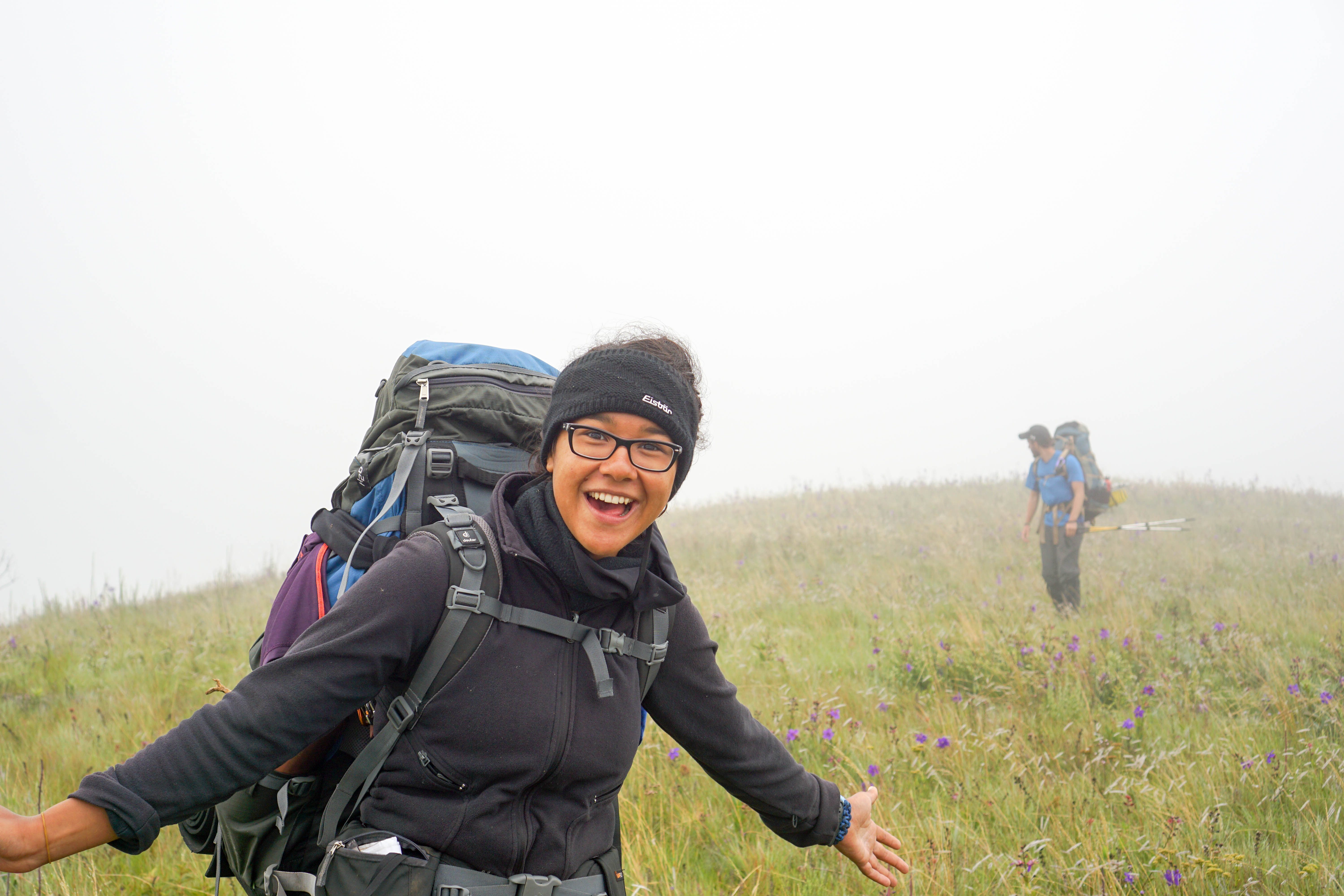
Photo by Jack Rokous
Who
It all begins with your crew. Everyone should have the joy of going backpacking, so whether your crew is made up of friends and family, students or clients, it’s important to take into consideration the group’s goals and desired outcomes, as well as the level of challenge they are seeking in their experience.
Defining Goals
Talk to your group and see what their goals are. If it’s a school-based program, you might talk to the teachers and administrators to decide upon learning outcomes. Many nonprofits and school programs want students to simply have fun in nature, and experience things they might never have experienced before. Some groups want to focus on team-building, teaching communication skills or building bonds of trust between students. Whatever the group’s goals are, you can plan activities to meet their needs and desired outcomes.
- To teach resilience, perseverance and interdependence, backpacking is perfect.
- To instill trust, communication and bonding, rock climbing presents some incredible metaphors.
- To teach different types of leadership styles, distributing responsibilities throughout the group on a rotating basis, allows different opportunities for various leadership styles to shine.
Considering Needs and Desires
The specific needs of the crew will also determine the logistical details of your expedition. Young students may benefit more from camping in the same place each night, and not having to carry a large amount of weight. Some individuals may personally elect to take a more challenging route, and as the leader and guide of the group, you can give them autonomy by collaborating and taking their input seriously when planning. If a group needs more challenges, there is no shortage of ways to adjust a backpacking trip. If rest and rejuvenation is the main priority, a more relaxed schedule can always be accommodated.
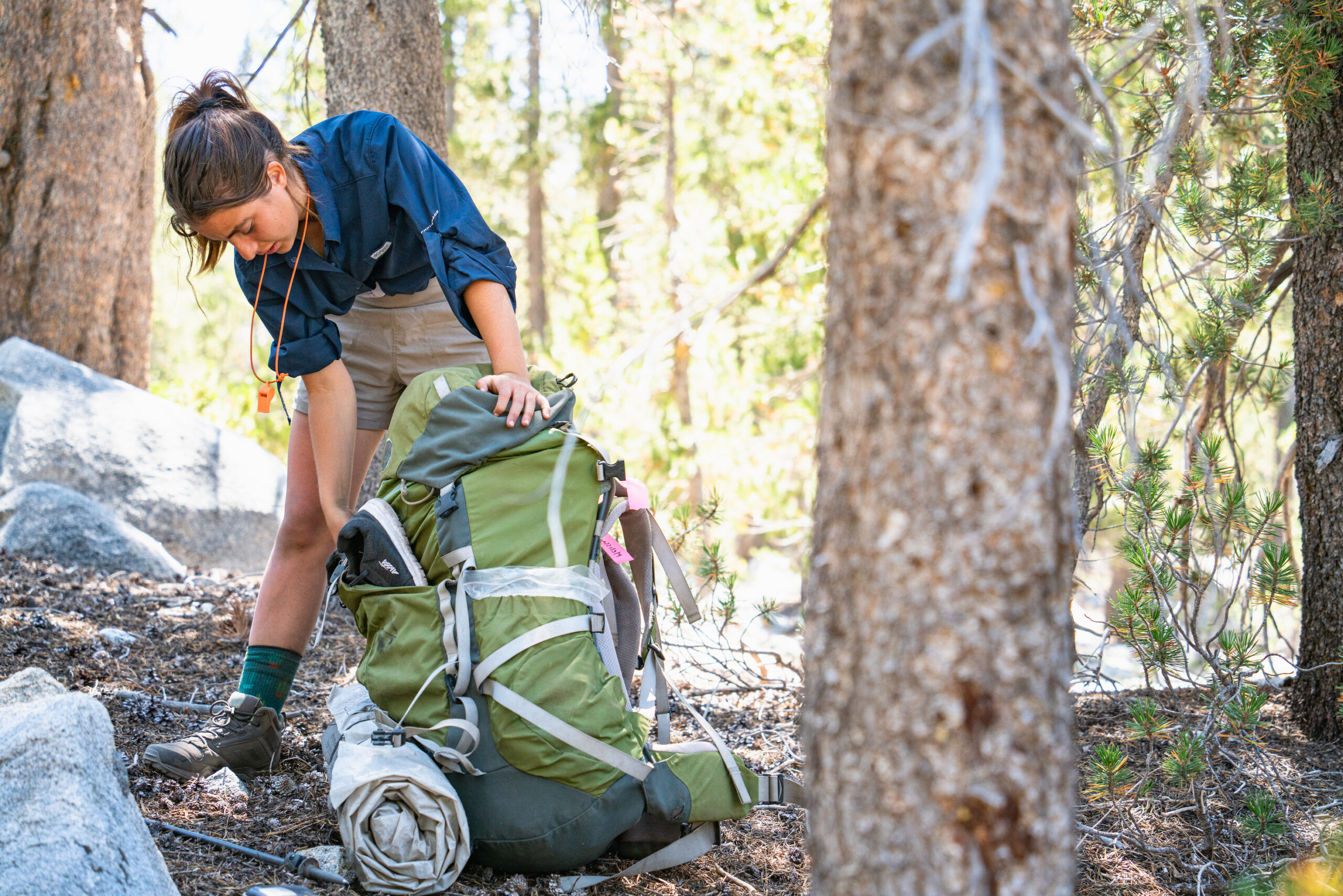
Photo by Dalton Johnson
What
Once the group’s needs are determined, it’s time to decide what type of gear you are going to need for your expedition. In general, gear falls into several main categories.
Individual Gear
Individual gear consists of the things each person will carry for their own use for the duration of the trip. Things like water bottles, eating utensils and bowls can oftentimes be overlooked, but are essential for each person to bring in addition to some more technical pieces of gear. Each individual will need a well-fitting backpacking pack, a warm sleeping bag and a sleeping mat or pad.
Sufficient clothing should also be carried by each person, including athletic clothing for the day, warm layers for the evenings, sun protection and clean undergarments and socks. Remind your future crew to not forget to pack their own medications (prescriptions only, of course) and toiletries from home. Many outdoor enthusiasts like to try to bring only the bare minimum essentials to keep weight down. However, since backpacking should be an accessible and comforting experience, I always encourage my group to bring small, lightweight comfort items. These items include skin and hair care products, journals, stuffed animals, comic books, culturally significant items and anything else that might make you feel more at home.
More information on gear and packing can be found here.
Group Gear
Group gear are things that will be used by everyone in the group, and the weight will be split up between everyone. Tents or sleeping tarps, hand washing equipment, maps and compass, camera, kitchen gear and first aid kit are the basic group gear items you’ll need.
There are, of course, many items that will make your trip more educational, more relaxing, or simply, more fun! It will be up to you and your group to decide how to prioritize your gear.
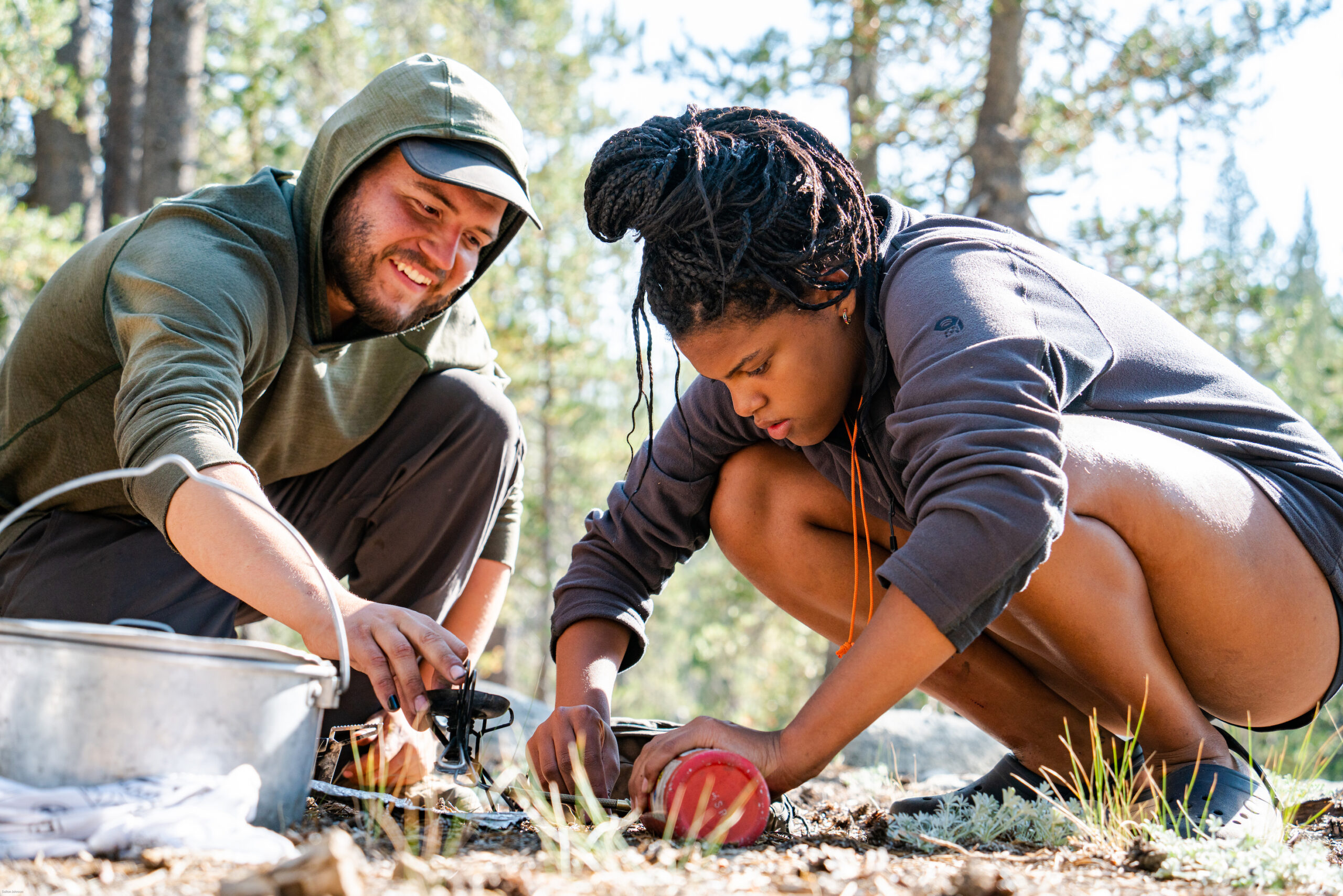
Photo by Dalton Johnson
Kitchen Gear
Kitchen gear consists of a stove, pot for boiling water and pan for frying up some delicious meals. You’ll need utensils, including a knife, spatula, serving spoons and potholders, as well as small cutting boards, and of course, a cleaning system. A pot scraper, soap and a sponge can never be forgotten, unless you like scraping out oatmeal bits with your fingernails! In order to keep your kitchen set up as “LNT” (Leave No Trace) as possible, bring a small mesh screen with you to filter out compost from gray water, which is any waste water that comes from dishes, handwashing, tooth brushing, etc. Dig a hole and pour waste water from your dishes through the screen. Take your sustainability the extra mile by packing separate trash and compost bags! When you return from your trip you can compost the leftover bits, instead of dumping them in your camp, where they might attract critters who should not become dependent on human food.
How much food, and what kind, should you bring on a backpacking trip?
The average teenager needs to consume between 2,500 and 3,000 calories per day to account for their activity levels. For adults, it could range from 2,000 to 3,200. It’s important to consider that during a backpacking trip, activity levels will be higher, and everyone will need more energy than usual. This is especially true in hot weather and at high altitude.
You should plan to bring at least three calorie dense meals per day, as well as snacks and electrolyte powder.
Breakfast can be as slow or fast as you need it to be to meet your schedule.
- Oats, cereals, breakfast burritos and parfaits are great breakfasts that can give everyone the energy boost they need to start the day.
For a mid-morning or mid-afternoon snack, pack granola bars, oranges, apples, dried fruits, jerky, nuts, pretzels and hummus or cheese and crackers.
Lunch on backpacking trips can be both simple and creative.
- Dehydrated hummus makes for a lightweight and super high protein meal. Mix in some olive oil, hot sauce, and spices, and spread on a pita with cucumber slices, deli meats, and cheese. Bring some dehydrated tomato sauce powder, and you can whip up a tasty backcountry pizza with pita bread, pepperoni and cheese slices.
When planning dinners, keep in mind that some vegetables can last several days without refrigeration. There is no need to sacrifice a delicious, tasty meal when backpacking! Bring broccoli, carrots, bell peppers, onions, sweet potatoes and cabbage. Mix and match veggies with carbs, such as rice, pasta, quinoa, orzo, etc.
- For vegetarian folks, bringing packaged tofu that doesn’t need to be refrigerated can offer a plethora of incredible backcountry options.
- For meat lovers, there is no better smell than burgers and hot dogs being grilled in a campsite!
When it comes time to pack your food, make sure you keep track of how it will be cooked, so you know how much fuel to bring. If you have cold breakfast every day, and hot dinners every night, you won’t need more than a couple of small fuel canisters for a 4-day trip. If you have a group of adults on the other hand, who need hot coffee every morning, you’ll want to pack an extra fuel canister.
For vegetarian-friendly recipes, read this.
For recipes you can make without a camp stove, read this.
For the best backcountry pizza, read this.
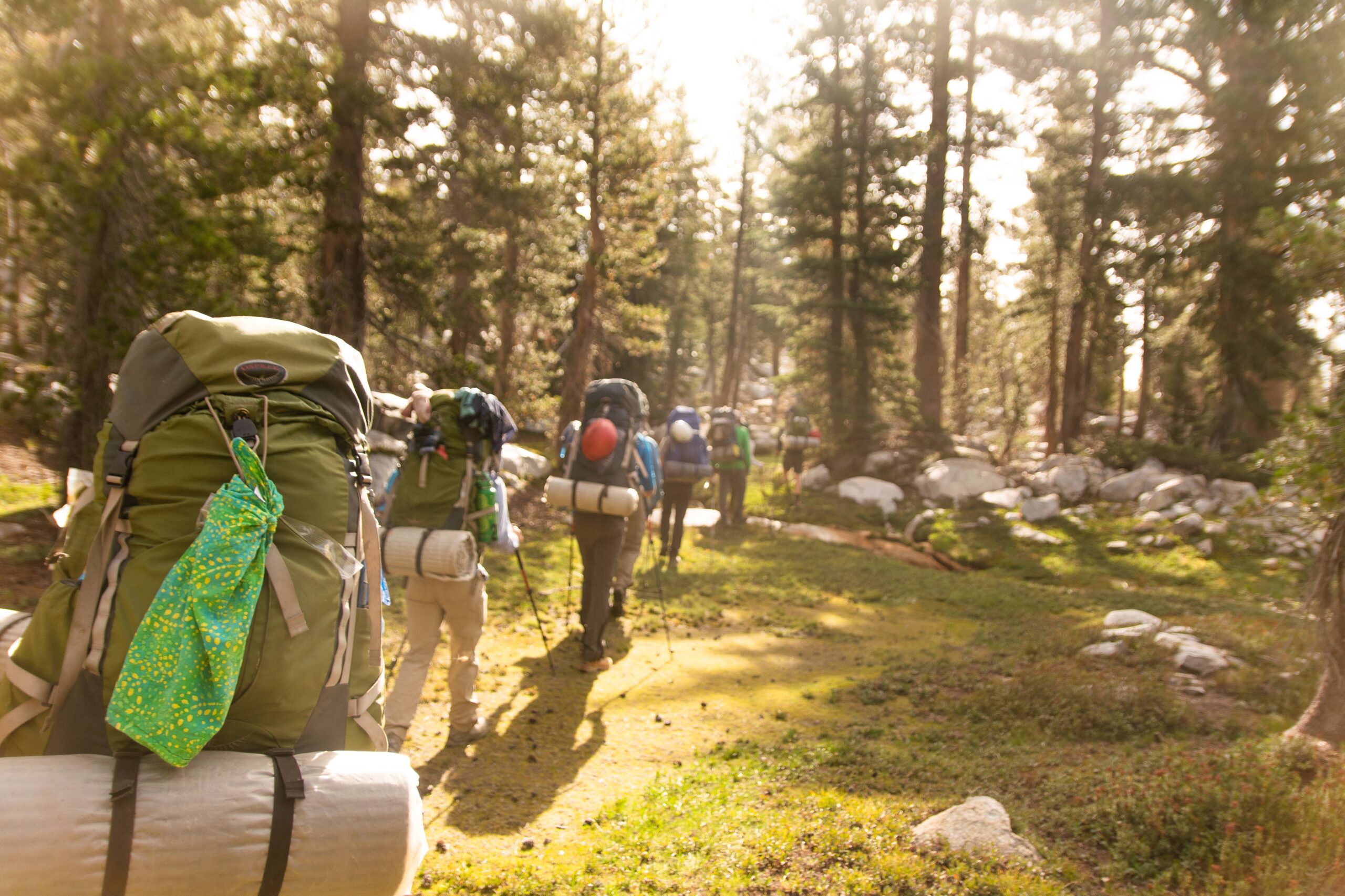
Photo by Micah Bowe
When and Where
Environment
Knowing your environment is critical in planning a backpacking trip. Time of year matters, as a trail or wilderness area will be completely different in September than it was in March.
- Consider what season you are planning to travel, as well as the climate, elevation, and temperature of the area.
Oftentimes the when will lead directly to the where, as seasonal weather changes predict what is possible in the world of backpacking.
Deciding where to go will be a more complex process and could involve significant research.
Find Out What Type of Land You Are On
Whether it is a State or National Park, a Wilderness Area, land managed by the Bureau of Land Management or the National Forest Service. In some areas, you may even be traveling through private land, and it is always important to know the regulations for the type of land you are traveling through. Be sure to have valid permits for the areas you are in, and most importantly, do your research to understand whose land you are on from a historical perspective.
While currently governed by different agencies in terms of rules and regulations, public lands have a deeper history of Indigenous stewardship and colonization.
A great learning activity as a backpacking instructor is to research and print out information on the native peoples of the areas you are traveling through and discuss it with your group during the trip. It can include traditional stories and mythology, information about the history of the area’s colonization and resources to get involved with current local Indigenous people. Another way to partner with local Indigenous tribes as active community members in the outdoors, is to contact the local tribe of the land you will be on and with their consent, donate money and resources to their ongoing needs and efforts.
Plan and Be Aware
When planning your route, consider the goals of your group. For beginners, aim on the side of fewer miles, less elevation and more breaks. Plan for a margin of error, and don’t get caught up in the mindset of having to crush miles every day. Rest days are critical. 1-mile days are nothing to be ashamed of. Rest days with quesadillas cooked for lunch can bring joy and rejuvenation, whereas 15-mile days can make students feel incredibly accomplished and powerful. Read the group and adjust the route to what they are ready for.
Find established campsites along your route and follow Leave No Trace guidelines however possible. Dispersed campsites can be a great alternative to overused state and national park campgrounds, but you’ll want to research the accommodations. Find out what the bathroom options are, and what water sources look like (faucets, spigots, springs, lakes, waterfalls: all of these could be sources of water on a backpacking trip!) Learn more here.
Fire awareness is becoming more and more critical, especially in areas on the west coast. It’s important to know the location of all nearby fires, and to have emergency evacuation plans in case things become dangerous. Carrying an air quality index reader is a choice that you won’t regret if the skies start getting smokier.
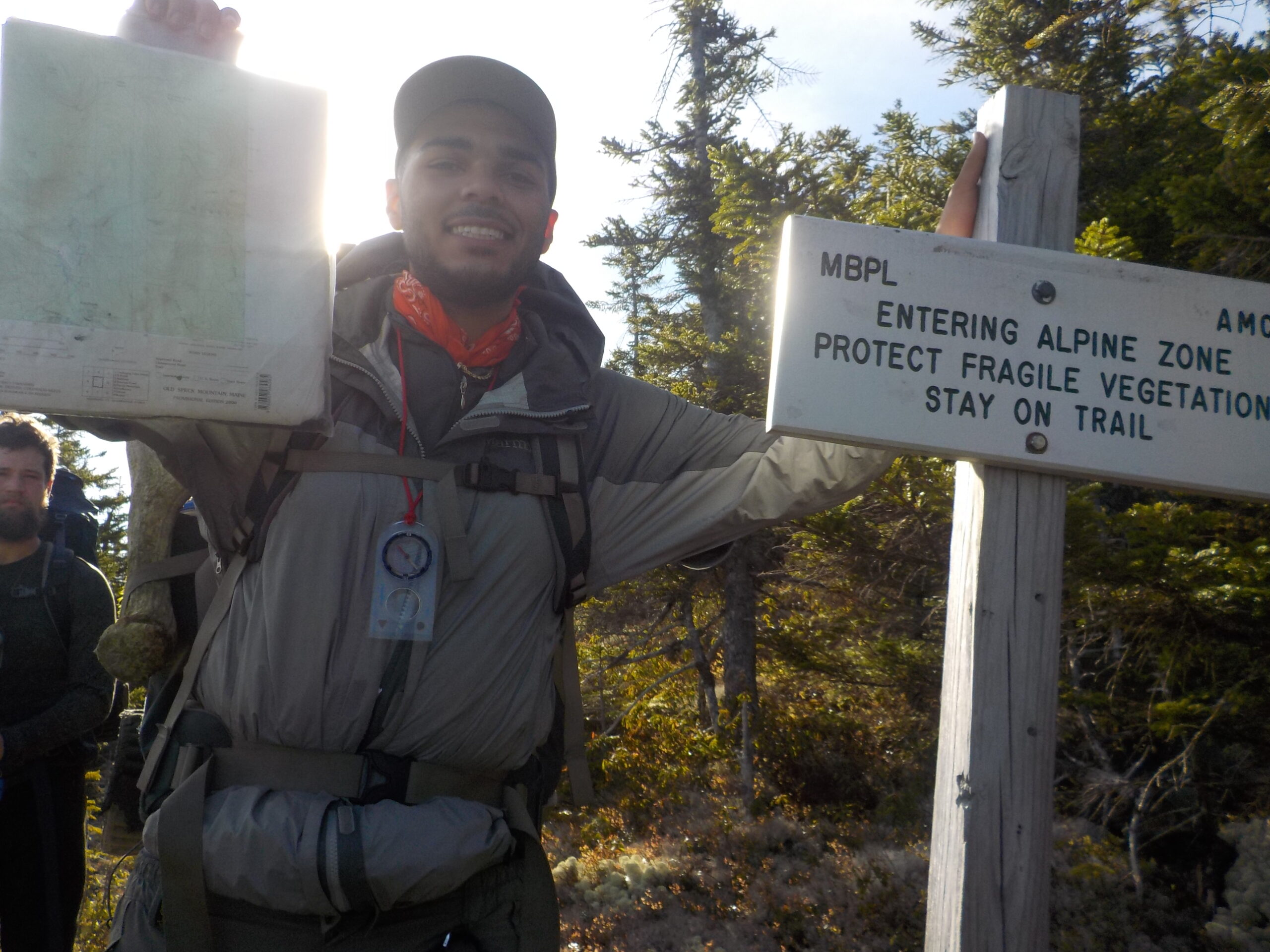
Why
Perhaps the most important part of your backpacking trip, and at times, the most difficult to nail down. What is the heart behind the trip? Why do we go out into nature, why do we go backpacking, when we have all the comforts of home right here? What is the point of packing it all up in colorful stuff sacks, and sleeping under the stars?
Everyone must answer this one for themselves. People go backpacking for as many reasons as there are National Parks. It could be for self-discovery, healing, unplugging, connecting with loved ones, seeing beautiful views or simply being in nature. Talk to your group about the importance of natural spaces, and why we need to commune with, appreciate, and ultimately, protect them. Ask your students, friends or family to share why they wanted to come on the trip, and you will get many unique and beautiful answers. Open the door to reflection and love of the outdoors, and you’ll find that the human passion for nature is contagious. Let’s spread it far and wide!
Interested in turning your love for outdoor instructing into your career? Explore our Outdoor Educator expeditions and spend 50+ days learning and developing the skills to confidently lead others in backcountry settings.
About the Author
Tilly Schoonhoven is a San Francisco Bay Area based educator, naturalist and poet, who goes by they/them pronouns. Tilly has worked in the outdoor industry for the past eight years, most recently at Outward Bound California as a Field Instructor, Equity Process Facilitator, Communications Contractor and Social Media Writer. They are passionate about bringing equity and justice to all corners of the outdoor industry, and they are known in their communities for engaging others in thoughtful and challenging dialogues to push the Outdoor industry forward. In their free time, Tilly enjoys taking care of their plants, and laying on the beach on a rare sunny day in San Francisco.
OTHER POSTS YOU MAY LIKE
Read More
Read More
Read More




